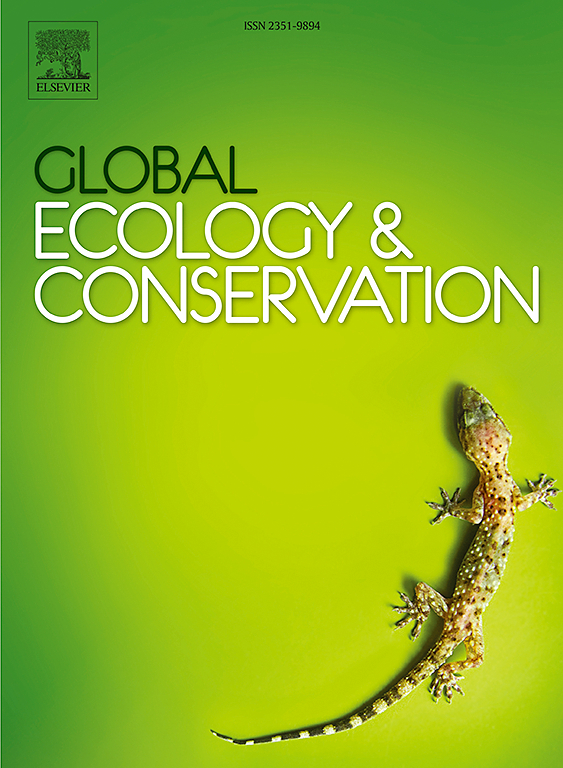Development of an eDNA-based qPCR and dPCR method for detecting the spatial distribution and relative abundance of the critically endangered Giant Barb (Catlocarpio siamensis)
IF 3.5
2区 环境科学与生态学
Q1 BIODIVERSITY CONSERVATION
引用次数: 0
Abstract
Giant Barb (Catlocarpio siamensis) is the largest freshwater fish in the Cyprinidae family and is found in several countries, including Thailand. Due to its large size, it has been a popular food source for local communities. However, the population of this species has drastically declined due to overfishing, habitat destruction, and water pollution. Consequently, the Giant Barb is now classified as Critically Endangered (CR) on the IUCN Red List, and there have been reports of its absence from some rivers. Monitoring Giant Barb’s distribution is essential for developing appropriate conservation strategies. Here, we developed environmental DNA (eDNA) assays using qPCR and dPCR for detecting and monitoring the Giant Barb. Both eDNA-based methods were successful in detecting Giant Barb eDNA, with dPCR being more sensitive, detected the Giant Barb at 27 out of 31 sites, whereas qPCR detected it at 14 sites. The average eDNA concentrations for qPCR varied from 0.522 to 0.716 copies/µl, while dPCR had a broader range of 0.470–0.871 copies/µl. dPCR detected fish eDNA at all seven visually confirmed sites, whereas qPCR only detected it at three locations. In the present study, dPCR demonstrated better performance in acquiring distribution data, making it important for detecting and monitoring endangered fish species. This eDNA-based method of conservation offers hope and assistance for protecting this important species and preserving our freshwater habitats.
求助全文
约1分钟内获得全文
求助全文
来源期刊

Global Ecology and Conservation
Agricultural and Biological Sciences-Ecology, Evolution, Behavior and Systematics
CiteScore
8.10
自引率
5.00%
发文量
346
审稿时长
83 days
期刊介绍:
Global Ecology and Conservation is a peer-reviewed, open-access journal covering all sub-disciplines of ecological and conservation science: from theory to practice, from molecules to ecosystems, from regional to global. The fields covered include: organismal, population, community, and ecosystem ecology; physiological, evolutionary, and behavioral ecology; and conservation science.
 求助内容:
求助内容: 应助结果提醒方式:
应助结果提醒方式:


